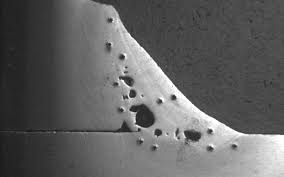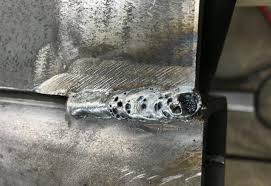What is Porosity in Welding: Crucial Tips for Achieving Flawless Welds
Recognizing Porosity in Welding: Checking Out Causes, Effects, and Prevention Methods
Porosity in welding is a relentless difficulty that can significantly influence the quality and honesty of welds. As specialists in the welding market are cognizant, comprehending the causes, effects, and prevention techniques connected to porosity is crucial for attaining robust and reputable welds. By delving right into the source of porosity, analyzing its harmful effects on weld high quality, and discovering efficient avoidance techniques, welders can boost their understanding and skills to create high-grade welds consistently. The elaborate interplay of aspects adding to porosity requires a thorough understanding and a positive method to guarantee effective welding outcomes.
Typical Root Causes Of Porosity
Contamination, in the kind of dust, oil, or corrosion on the welding surface, creates gas pockets when heated up, leading to porosity in the weld. Inappropriate securing takes place when the securing gas, typically made use of in processes like MIG and TIG welding, is unable to fully shield the molten weld pool from responding with the bordering air, resulting in gas entrapment and subsequent porosity. In addition, insufficient gas insurance coverage, usually due to wrong flow prices or nozzle positioning, can leave parts of the weld vulnerable, allowing porosity to form.
Impacts on Weld Top Quality
The visibility of porosity in a weld can significantly compromise the overall top quality and stability of the welded joint. Porosity within a weld produces voids or dental caries that compromise the structure, making it more vulnerable to cracking, corrosion, and mechanical failure. These spaces function as stress concentrators, reducing the load-bearing capability of the weld and raising the likelihood of premature failure under applied stress. Furthermore, porosity can additionally work as potential sites for hydrogen entrapment, further aggravating the deterioration of the weld's mechanical residential or commercial properties.
Furthermore, porosity can hinder the effectiveness of non-destructive testing (NDT) techniques, making it testing to find various other issues or stoppages within the weld. This can cause considerable security issues, particularly in important applications where the architectural integrity of the bonded components is paramount.

Avoidance Techniques Review
Offered the harmful influence of porosity on weld quality, reliable avoidance methods are crucial to keeping the architectural integrity of welded joints. Among the main prevention techniques is comprehensive cleansing of the base materials before welding. Pollutants such as oil, oil, rust, and moisture can contribute to porosity, so making certain a clean work surface is important. Appropriate storage space of welding consumables in completely dry conditions is also critical to stop wetness absorption, which can bring about gas entrapment throughout welding. Additionally, choosing the suitable welding specifications, such as voltage, existing, and take a trip rate, can assist minimize the risk of porosity development. Making sure adequate shielding gas circulation and protection is one more important prevention method, as insufficient gas coverage can lead to climatic contamination and porosity. Ultimately, appropriate welder training and accreditation are important for applying safety nets successfully and constantly. By integrating these avoidance methods right into welding techniques, the event of porosity can be significantly lowered, causing stronger and much more dependable welded joints.
Value of Appropriate Protecting
Correct protecting in welding plays a crucial duty in protecting against climatic contamination and making certain the stability of bonded joints. Securing gases, such as argon, helium, or a blend of both, are commonly used to shield the weld pool from reacting with aspects airborne like oxygen and nitrogen. When these reactive elements enter into contact with the hot weld swimming pool, they can cause porosity, bring about weak welds with decreased mechanical see this page residential or commercial properties.

Poor securing can cause numerous flaws like porosity, spatter, and oxidation, compromising the structural stability of the welded joint. For that reason, adhering to proper securing techniques is important to create high-grade welds with very little flaws and make certain the durability and dependability of the welded elements (What is Porosity).
Surveillance and Control Methods
Exactly how can welders efficiently keep an eye on and manage the welding process to ensure ideal results and prevent flaws like porosity? One key approach is with making use of innovative surveillance technologies. These can include real-time monitoring systems that supply responses on criteria such as voltage, present, travel rate, and gas flow rates. By continuously checking these variables, welders can determine variances from the ideal problems and make immediate adjustments to stop porosity formation.

In addition, applying correct training programs for More Help welders is important for keeping track of and controlling the welding procedure effectively. What is Porosity. Enlightening welders on the relevance of preserving regular parameters, such as appropriate gas shielding and travel speed, can aid protect against porosity problems. Routine evaluations and accreditations can additionally make certain that welders excel in monitoring and regulating welding processes
In addition, the usage of automated welding systems can boost monitoring and control capabilities. These systems can precisely regulate welding parameters, decreasing the possibility of human error and guaranteeing regular weld quality. By go to this site combining sophisticated monitoring innovations, training programs, and automated systems, welders can properly keep track of and regulate the welding process to lessen porosity flaws and attain top notch welds.
Conclusion
